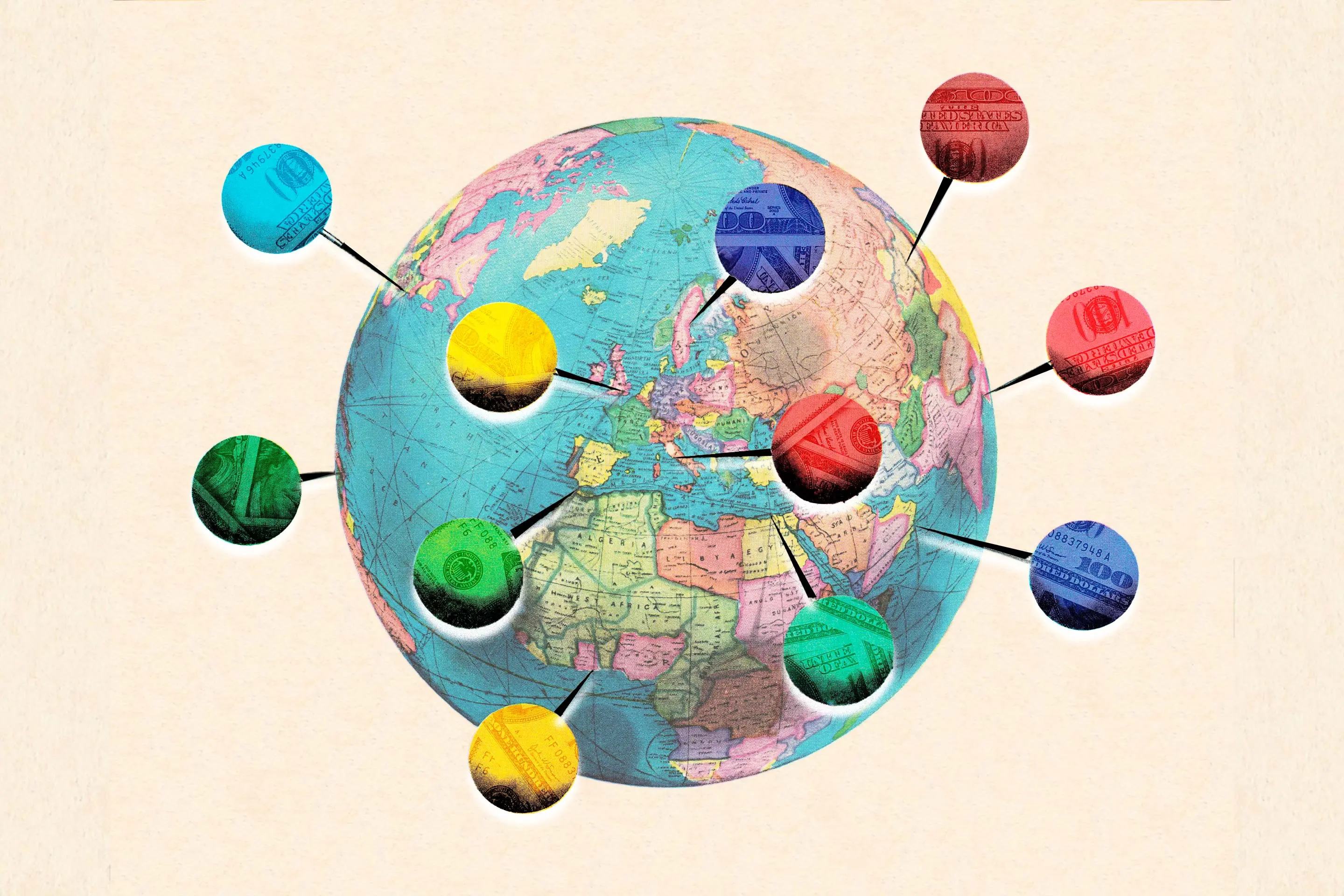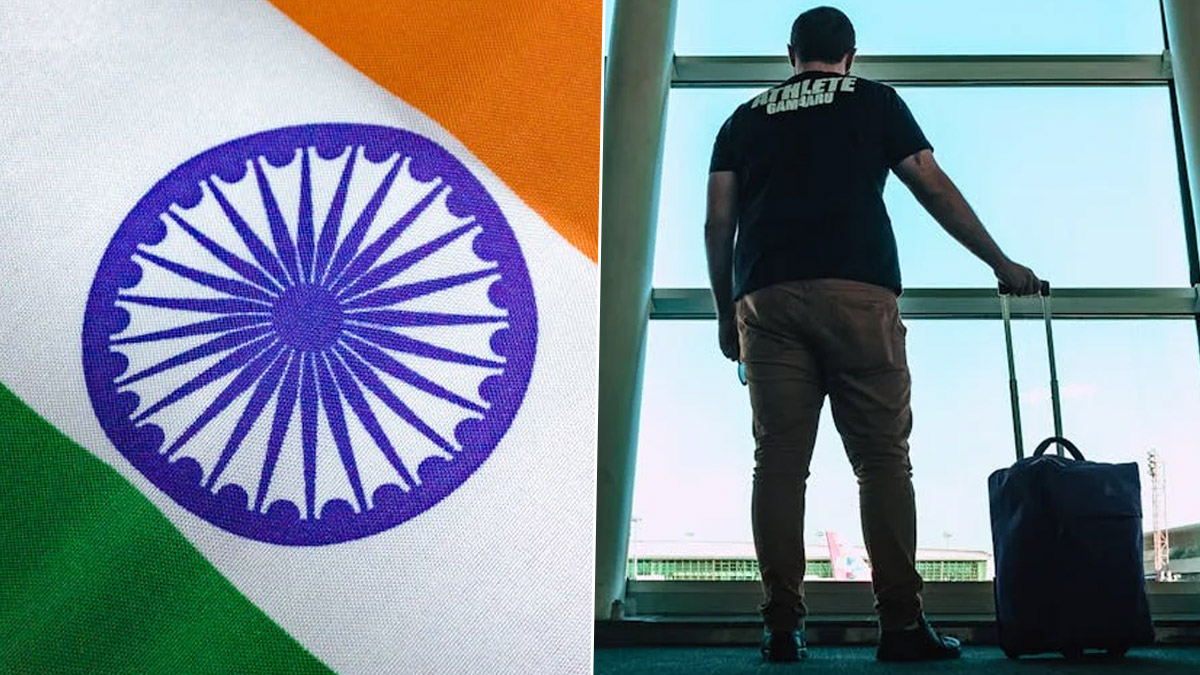Wondering Which Countries Have The Highest Millionaires And How Is Wealth Divided Globally; Take A Look At The UBS Global Wealth Report 2024, India Is Set To Have Maximum Migration Of Millionaires!
Almost half of the world's wealth, 47.5 per cent or $213 trillion, is held by just 1.5 per cent of the global adult population. By 2028, the UK is expected to lose the most millionaires – nearly one in six of its millionaires will lose that status. The Netherlands is another country set to lose 4 per cent of its millionaires by 2028. India too is looking at biggest migration of Almost half of the world's wealth, 47.5 per cent or $213 trillion, is held by just 1.5 per cent of the global adult population. By 2028, the UK is expected to lose the most millionaires – nearly one in six of its millionaires will lose that status. The Netherlands is another country set to lose 4 per cent of its millionaires by 2028. India too is looking at biggest migration of Almost half of the world's wealth, 47.5 per cent or $213 trillion, is held by just 1.5 per cent of the global adult population. By 2028, the UK is expected to lose the most millionaires – nearly one in six of its millionaires will lose that status. The Netherlands is another country set to lose 4 per cent of its millionaires by 2028. India too is looking at biggest migration of millionaires yet!

Speaking of Millionaires, according to the 2024 UBS Global Wealth Report (PDF), which analyzed 56 markets representing 92 per cent of global wealth, there are at least 58 million US dollar millionaires globally, making up 1.5 per cent of the adult population.
The United States leads with 21.95 million millionaires, followed by China with 6.01 million. The United Kingdom has 3.06 million millionaires, France has 2.87 million, and Japan has 2.83 million.
According to UBS, global wealth increased by 4.2 per cent in dollar terms in 2023, following a 3 per cent decline in 2022.
Samuel Adams, an economist at UBS, stated, “When you think of millionaires or the wealthy in general, there’s a core group with a strong attachment to their country and a more mobile segment that can easily switch domiciles globally.”
However, by 2028, the UK is projected to lose nearly one-sixth of its millionaires, the most significant decline among countries. Surprisingly, The Netherlands is also expected to see a 4 percent decrease in millionaires by 2028.
Adams explained, “The UK and the Netherlands have a substantial number of millionaires and a growing core. However, the mobile wealthy might relocate due to global competition for wealth. This doesn’t indicate a failing economy; wealth is still being created. It’s just that the mobile wealthy might consider other places to reside.”

How is wealth divided globally?
According to the Global Wealth Report, nearly half of the world’s wealth, 47.5 per cent or $213 trillion, is held by just 1.5 per cent of the global adult population.
These are households with more than $1 million in wealth.
In sharp contrast, individuals with less than $10,000 in wealth make up 39.5 per cent of the global adult population but hold just 0.5 per cent ($2.4 trillion) of global wealth.
Those with wealth between $10,000 and $100,000, representing 42.7 per cent of adults, account for 12.6 per cent of global wealth, totalling $56.2 trillion.
The Fastest-Growing Millionaires (2000-2023)
Since the beginning of the millennium, the global population has seen substantial progress in wealth per adult. The percentage of adults with wealth exceeding $1 million has tripled from 0.5 per cent to 1.5 per cent.
Qatar experienced the greatest increase in millionaires, rising from 46 to 26,163. China saw the second-largest increase, from 39,000 to 6,013,282 millionaires, followed by Kazakhstan, which increased from 918 to 44,307 millionaires.
“I think it’s important to appreciate that, in general, wealth grows proportionately to economic growth and vaguely to asset price growth,” said Samuel Adams, an economist at UBS.
“Emerging market economies such as China, especially if we think back to the 2000s when they were in a very different stage, and Russia, tend to see more wealth growth. It also helps if there is a concentration in a growing sector, such as commodity exports in Russia and some Middle Eastern countries, which supports rapid wealth accumulation, particularly among the top 10 percent.”
Regional Wealth Growth
UBS reported that over the 15 years it has published its report, the Asia-Pacific region has seen the greatest growth in wealth, increasing by almost 177 per cent.
The Americas followed with nearly 146 percent growth, while Europe, the Middle East, and Africa (EMEA) saw a 44 percent increase.
The Highest Share of Millionaires
The US is home to 38 per cent of the world’s millionaires, with Western Europe accounting for 28 per cent and China for 10 per cent.
By percentage, Switzerland has the highest concentration of millionaires, with 12 out of every 100 people possessing more than $1 million in wealth. Following Switzerland, Hong Kong has eight millionaires per 100 people, Australia and the Netherlands each have seven per 100, and the US has six per 100.

What about Indian Millionaires?
The Henley Private Wealth Migration Report 2024 indicates that India is projected to see a net loss of 4,300 millionaires this year.
Although this is a decrease from the 5,100 who left in 2023, India remains a leading country for high-net-worth individual (HNWI) departures. This trend is increasingly being driven by geopolitical tensions, economic uncertainties, and social upheaval.
UAE Emerges As The Premier Destination For Indian Millionaires
The United Arab Emirates continues to attract Indian millionaires, expecting a record net inflow of 6,700 wealthy migrants in 2024.
The UAE’s appeal is strengthened by its zero income tax policy, golden visa programs, luxurious lifestyle, and strategic location.
Sunita Singh-Dalal, a partner at Hourani in Dubai, noted, “The evolution and development of the UAE’s wealth management ecosystem is unprecedented. In less than five years, the UAE has introduced a robust regulatory framework that provides the wealthy with a range of innovative solutions to protect, preserve, and enhance their wealth.”
Indians are among the top nationalities driving demand for residence and citizenship by investment programs. Popular options include Portugal’s Golden Residence Permit Program, Greece’s Golden Visa Program, Spain’s Residence by Investment Program, and Malta’s Citizenship by Naturalisation for Exceptional Services by Direct Investment.
In the Caribbean, Antigua and Barbuda’s and Grenada’s Citizenship by Investment Programs continue to attract affluent Indians and their families.
Global Wealth Migration Trends
Dominic Volek, Group Head of Private Clients at Henley & Partners, emphasises 2024 as a key year for global wealth migration, with an unprecedented 128,000 millionaires expected to relocate worldwide, surpassing the previous record of 120,000 set in 2023.
“This great millionaire migration signals a profound shift in the global landscape, with far-reaching implications for both the countries they leave and those they move to,” he says.
Other top destinations for migrating millionaires include the United States, Singapore, Canada, and Australia, all of which are expected to see significant net inflows of wealthy individuals, benefiting from the economic contributions and job creation that HNWIs often bring.

Why are people moving out of India?
The outflow of millionaires from India is driven by several factors, including the pursuit of better lifestyles, safer environments, and access to superior health and education services.
Dr. Hannah White OBE, Director and CEO of the Institute for Government in London, emphasizes that economic and political stability are essential for retaining high-net-worth individuals (HNWIs).
Significant outflows are also expected from other countries such as China, the UK, South Korea, Brazil, South Africa, Taiwan, Vietnam, and Nigeria. Each of these nations faces unique challenges that influence their patterns of millionaire migration.
The migration of millionaires has substantial economic implications.
Andrew Amoils, Head of Research at New World Wealth, explains, “Migrating millionaires are a vital source of foreign exchange revenue as they tend to bring their money with them when they move to a new country. Additionally, about 20 percent of them are entrepreneurs and company founders who may start new businesses and create local jobs in their new country, and this percentage rises to over 60 percent for centi-millionaires and billionaires.”
As global wealth migration trends continue to evolve, countries with favorable policies for HNWIs are set to benefit the most. Henley & Partners’ report indicates the importance of these initiatives in attracting and retaining global wealth.
India’s position in the global wealth migration trend indicates the need for policies that promote economic stability and growth.
As wealthy Indian individuals seek better opportunities abroad, countries like the UAE, the USA, and Portugal offer attractive options through investment migration programs as they tick all the right boxes!




